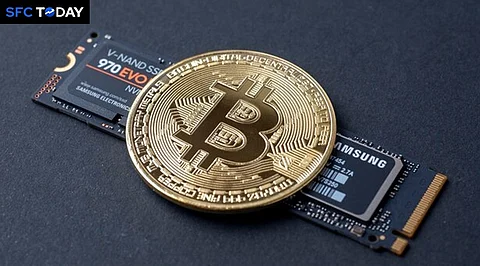

In the ever-evolving landscape of cryptocurrency adoption and financial innovation, crypto cards have emerged as a bridge between traditional finance and digital currencies. These cards, typically issued by fintech companies, allow users to spend their cryptocurrencies at merchants that accept card payments, effectively converting digital assets into fiat currencies in real-time. As we navigate through 2024, the question arises: Are crypto cards still relevant in today's rapidly changing financial ecosystem?
Crypto cards gained popularity as early as the mid-2010s, offering a practical solution to the liquidity problem faced by cryptocurrency holders. By linking digital wallets to physical or virtual cards, users could access their crypto holdings for everyday transactions, from groceries to online purchases, without needing to convert funds through exchanges.
Over the years, crypto cards have evolved significantly in terms of functionality and usability:
Integration with Major Payment Networks: Many crypto cards now leverage established payment networks like Visa and Mastercard, enabling seamless acceptance at millions of merchants worldwide. This integration enhances usability and convenience for cardholders, who can use their crypto assets wherever traditional payment cards are accepted.
Multi-Currency Support: Modern crypto cards support multiple cryptocurrencies, allowing users to spend Bitcoin (BTC), Ethereum (ETH), and other popular coins directly. Some cards also offer stablecoin support, providing stability amidst crypto price volatility.
Rewards and Incentives: To incentivize usage, crypto cards often offer rewards programs, cashback incentives, or loyalty bonuses in cryptocurrency. These benefits appeal to both crypto enthusiasts and mainstream users looking to maximize their spending power.
Mobile App Integration: Many crypto card providers offer mobile apps that enable users to manage their card settings, track transactions in real-time, and easily convert between cryptocurrencies and fiat currencies.
Despite their utility, crypto cards have faced regulatory scrutiny and varying degrees of acceptance in different jurisdictions. Regulatory challenges include compliance with anti-money laundering (AML) and Know Your Customer (KYC) regulations, as well as concerns over consumer protection and financial stability.
As of 2024, several factors contribute to the ongoing relevance of crypto cards:
Accessibility and Convenience: Crypto cards provide a practical means for crypto holders to access their funds for everyday spending. They eliminate the need for frequent cryptocurrency exchanges, reducing transaction costs and delays associated with traditional banking systems.
Integration with DeFi Ecosystem: With the rise of decentralized finance (DeFi), crypto cards can serve as a gateway for users to interact with DeFi protocols directly from their card balances. This integration enhances financial inclusivity and expands the utility of crypto assets beyond speculative trading.
Cross-Border Transactions: Crypto cards facilitate cross-border transactions without the need for currency conversion, making them valuable tools for global travelers and international businesses.
Educational and Awareness Benefits: By promoting the use of crypto in everyday transactions, crypto cards contribute to mainstream adoption and awareness of digital currencies' potential benefits and risks.
However, challenges persist that could impact the future relevance of crypto cards:
Regulatory Uncertainty: Regulatory environments vary globally, impacting the availability and operational scope of crypto cards in different regions. Compliance with evolving regulations remains a critical hurdle for providers.
Competing Payment Innovations: The fintech landscape continues to innovate with alternative payment solutions, including mobile wallets, digital currencies issued by central banks (CBDCs), and blockchain-based payment networks. Crypto cards must compete with these emerging technologies to maintain relevance.
Security Concerns: As with any financial technology, security remains a paramount concern. Ensuring robust cybersecurity measures and user protections is essential to maintain trust and adoption among consumers.
In conclusion, crypto cards have evolved into a practical financial tool that bridges the gap between digital assets and traditional finance. Their continued relevance in 2024 hinges on their ability to adapt to regulatory changes, enhance usability and security, and integrate with emerging financial technologies. As the cryptocurrency ecosystem matures and adoption grows, crypto cards are likely to remain a relevant option for users seeking convenient access to their digital wealth in everyday transactions.